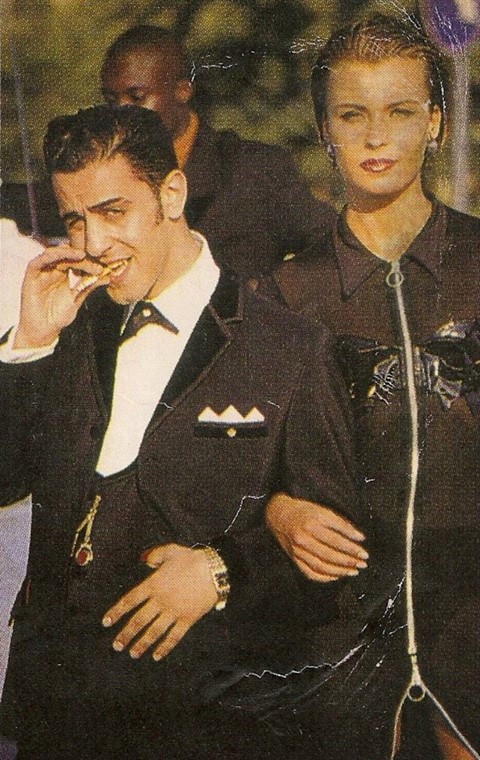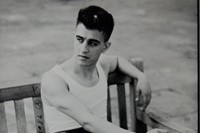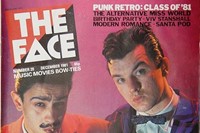To coincide with the V&A's Club to Catwalk exhibition, we consider the iconic style of 80s legend Christos Tolera...
Club to Catwalk opened earlier this month at the V&A, documenting the stylish subcultures of London during the 1980s and the clothes that dressed the decade. The first image one sees upon entering the exhibition is a photograph of Christos Tolera in a signature, custom-made zoot suit, designed by Chris Sullivan and made by Ruocco Tailors. Tolera was a 1980s style icon, model, musician and club promoter who was part of the Blitz club rave pack that dominated 80s London: a new-romantic era of squat parties, escapism and wild, expressive fashion. As a London-based artist, Tolera is still celebrated for his distinctive look, including his striking sleeve tattoos.
Tolera is remembered for his dapper oversized Hollywood suits, berets and slick black hair. “A post-modern mish mash of a twentieth century dandy-man,” Tolera summarises. He was the co-lead singer in Latino band Blue Rondo à la Turk, one of the many bands who can be linked back to the Blitz nightclub, a tiny Covent Garden wine bar with a Second World War theme. Alongside Bananarama, Wham and Culture Club, they surfaced from a creatively charged adolescent hub that came alive as night fell.
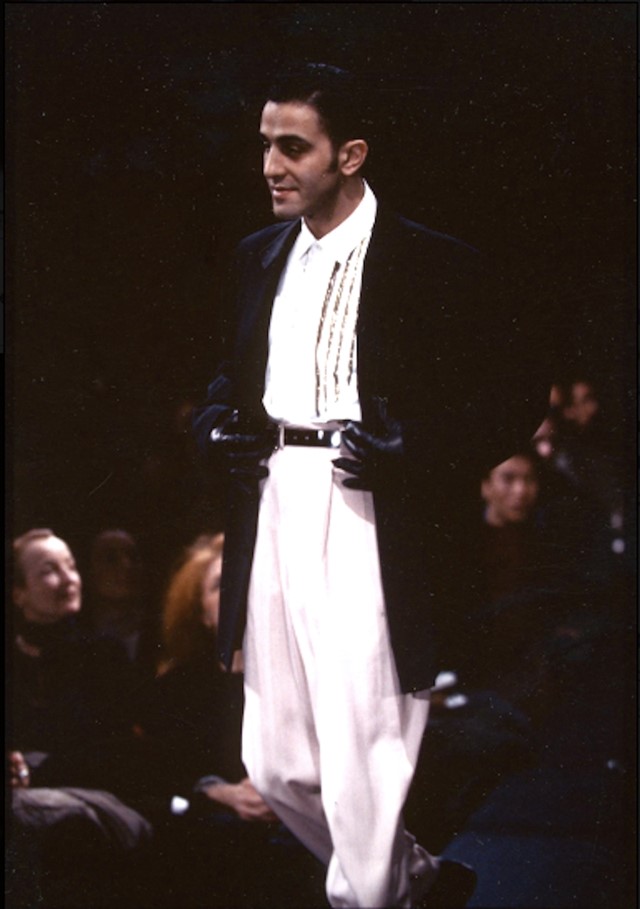
Tolera modelled for Yohji Yamamoto, Comme des Garçons and Jean Paul Gaultier amongst others, gaining popularity thanks to his dark Greek features and eclectic style. “Wet-lipped, dark and especially handsome,” remembers Boy George in his autobiography, Take it Like a Man. Tolera appeared in videos for Spandau Ballet and Michael Jackson as well as successfully dabbling in painting, acting and interior design. “Youth is definitely wasted on the young,” Tolera advises, looking back on his hedonistic life of parties, travel and glittering outfits, often marred by insecurity and angst. Here, AnOther speaks to Tolera about his fashion tastes and growing up at the forefront of the New Romantic decade.
What fashion phases have you gone through?
Aged eleven, I wanted to be Ziggy Stardust and then, until I was sixteen, any incarnation of David Bowie would do. But I never really had the hair or the pallor. I have always been interested in the clothes of yesteryear and the biggest influence on me weren't designers but Hollywood movies and movie stars. Whatever the zeitgeist I sort of slotted in with the latest silhouette until recently when I decided skinny was not for tubby me.
"I never feel fashionable or unfashionable and neither do I try" — Christos Tolera
I tend to act and react to what I see and feel around me. The irony of dressing like a forty-year-old George Raft aged nineteen is somehow sadly lost when one is actually forty and then some. Whether it was the 1980s forties or the 1990s sixties I never feel fashionable or unfashionable and neither do I try.
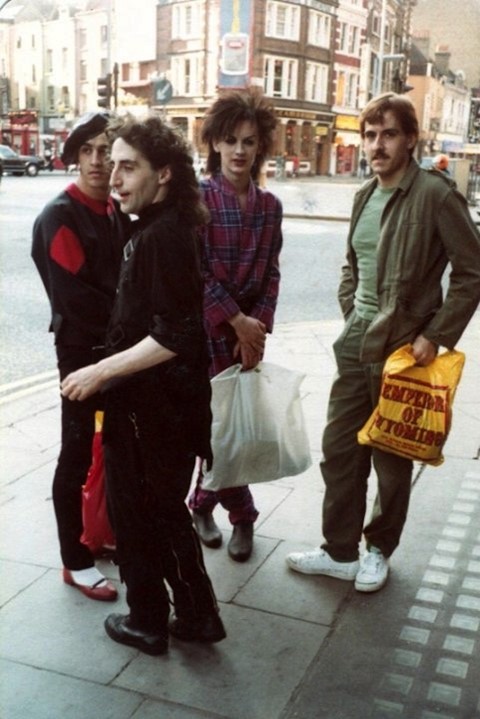
What was the Blitz Club era like?
As an excitable sixteen-year-old looking for adventure and freedom from the drab and grey London of the late 1970s, I was enthralled by a group of people who were willing to take their destiny into their own hands. Despite the impression we may now have due to the press received at the time, it wasn't all frills, tiaras, and panstick make-up. It was rockers and pirates and comic book heroes. It was Hollywood idols and hot chicks, trannies and clones. Yes there was leather and lace but what was really interesting was that the majority of people there (who numbered barely 150 and only 50 of whom may have looked good) were people like me, from the council estates of London, the suburbs and across Britain. This was a bunch of kids who took over empty clubs and warehouses and had a ball.
At that age we thought we would change the world and in some ways maybe we did. Style magazines like The Face and i-D came about as a result of these scenes. Everyone knew everyone because there weren't that many of us. Victims of our own success, we became entrenched in the possibility of commercial gain and as we know where there is commerce there is compromise and compromise is the nemesis of original thought and creativity. When youth becomes a product it stops producing and becomes enslaved to the establishment for fear of losing its status.
What is your fashion pet hate?
Blending in.
Club to Catwalk: London Fashion in the 1980s is at the Victoria and Albert Museum until February 16 2014. The accompanying book '80s Fashion: From Club to Catwalk' by Sonnet Stanfil is available from V&A Publishing priced £19.99.
Text by Mhairi Graham
